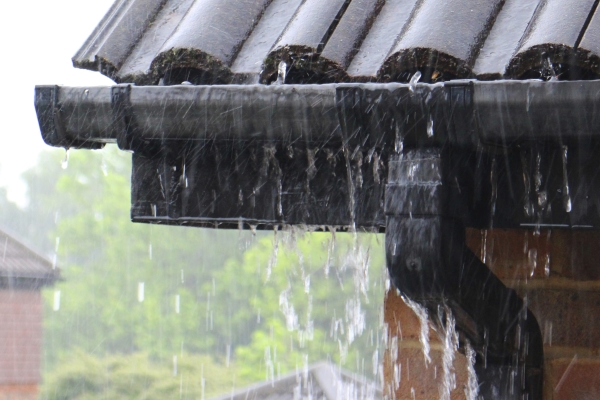Rain Water Filtration
Water is our most precious natural resource, it is essential to life and is used in many Commercial and Industrial applications. Lubron is committed to providing quality water treatment solutions using the best available filtration systems and technologies, customised to your needs.
Rainwater harvesting put simply is the collection of water from surfaces on which rain falls, and subsequently storing this water for later use. The most common method of rainwater harvesting is the collection of rainwater from the roofs of buildings. This is very common in rural parts of the UK, especially on farms but now becoming popular with environmental agencies with new-build projects.
To find out more about Lubron’s rainwater filtration systems and services, get in contact with a specialist today.

Rain Water Harvesting Case Study
To save water in industry, water for non-drinking water purposes can be replaced by surface or rainwater, and water-saving technologies can also be used in production and operation. However, care must be taken to avoid water hazards or even pollution.
A company from the electrical industry was looking for alternatives to reduce the water costs for the replenishment of its evaporative cooling tower and found a solution utilising the rainwater through a Lubron water treatment system.
Rainwater is now collected on 15,000 m² of sealed operating area, such as roofs and parking lots, and collected in rainwater retention basins. In this way, an average of 8,500 m³ of rainwater are collected each year, which are added to the cooling circuit as make-up water.
Assuming an average annual utilization of approx. 40% for 10 hours a day, and this assumes 230 days a year, the total water consumption of the cooling tower is 20,000 m³ / year. This means that over 40% of the feed water can be supplied from rainwater, and drinking water consumption drops to 11,500 m³ per year.
With water purchase and pro-rata wastewater costs of around 2.50 euros / m³, this means savings of approx. 21,250 euros / year for the water supply to the cooling tower.
Since rainwater is softer than drinking water and does not have to be softened, the consumption of chemicals for pre-softening and the salt load for regeneration is also reduced, which results in further cost savings. The use of anti-corrosion agents and hardness stabilizers also drops due to the use of rainwater. In certain areas, the use of rainwater for technical purposes is also subsidized by the state, which further shortens the payback period for the technology required to convert to rainwater use. This is usually just a filter system for the treatment of the collected rainwater.
Filtration is absolutely necessary, then the rainwater releases components such as nitrogen, oxygen and carbon dioxide from the air, but also contaminants and pollutants such as dust and soot.
A backwashable fine sand filter separates the unwanted dirt particles from the water and thus ensures that no unwanted components from the rainwater get into the cooling water circuit.
The gases dissolved in the rainwater are irrelevant for cooling tower operation. In order to ensure a constant water supply and the rainwater can be fully used, the filter system consists of three fine sand filters. Two of the filters are always operating in parallel, while one filter is in standby or backwashed.
With particulates building within the filter there is an increased pressure between the inlet and outlet. Based on the pressure differential, the system will automatically backwash cleaning the bed before returning to service.
Water is used as the backwashing medium, which flows through the filter against the direction of filtration during the washing process and thus loosens and discharges the dirt particles. The filtrate from the filters in operation is used as backwash water that flows through the filter against the direction of filtration during the rinsing process, thus loosening and removing the dirt particles.
The investments for the changeover are manageable. In the case of the electrical company, the investment for the filter system was 19,500 euros. Even without counting the savings in consumable chemicals and the state subsidy for rainwater use, the system’s payback period is less than one year.
A use like the one presented is also possible in areas with heavy rainwater pollution. In such cases, the filter system is preceded by a disinfection, such as an oxidation. Through intelligent circulation and thus multiple use of the cooling water used, further savings can be achieved and the operating costs of a cooling tower can be further reduced. Such innovative and environmentally friendly concepts are doubly important, especially in economically weak times.
Lubron rain water treatment solutions
While rainwater harvesting is of real interest to companies in terms of economy and autonomy, rainwater treatment is essential to ensure its usability. Filtration is suitable for any system, ensuring that only clean water enters the storage tank and all debris is filtered out.
Lubron offers both complete solutions for harvesting and filtering rainwater, as well as customised filtration systems for your water harvesting installation.
Please feel free to contact our experts in the following cases:
- you need help choosing the right rainwater filter;
- you have any issues with your current system;
- you need advice on installing a rainwater harvesting system;
- you look for a comprehensive solution for your project.

